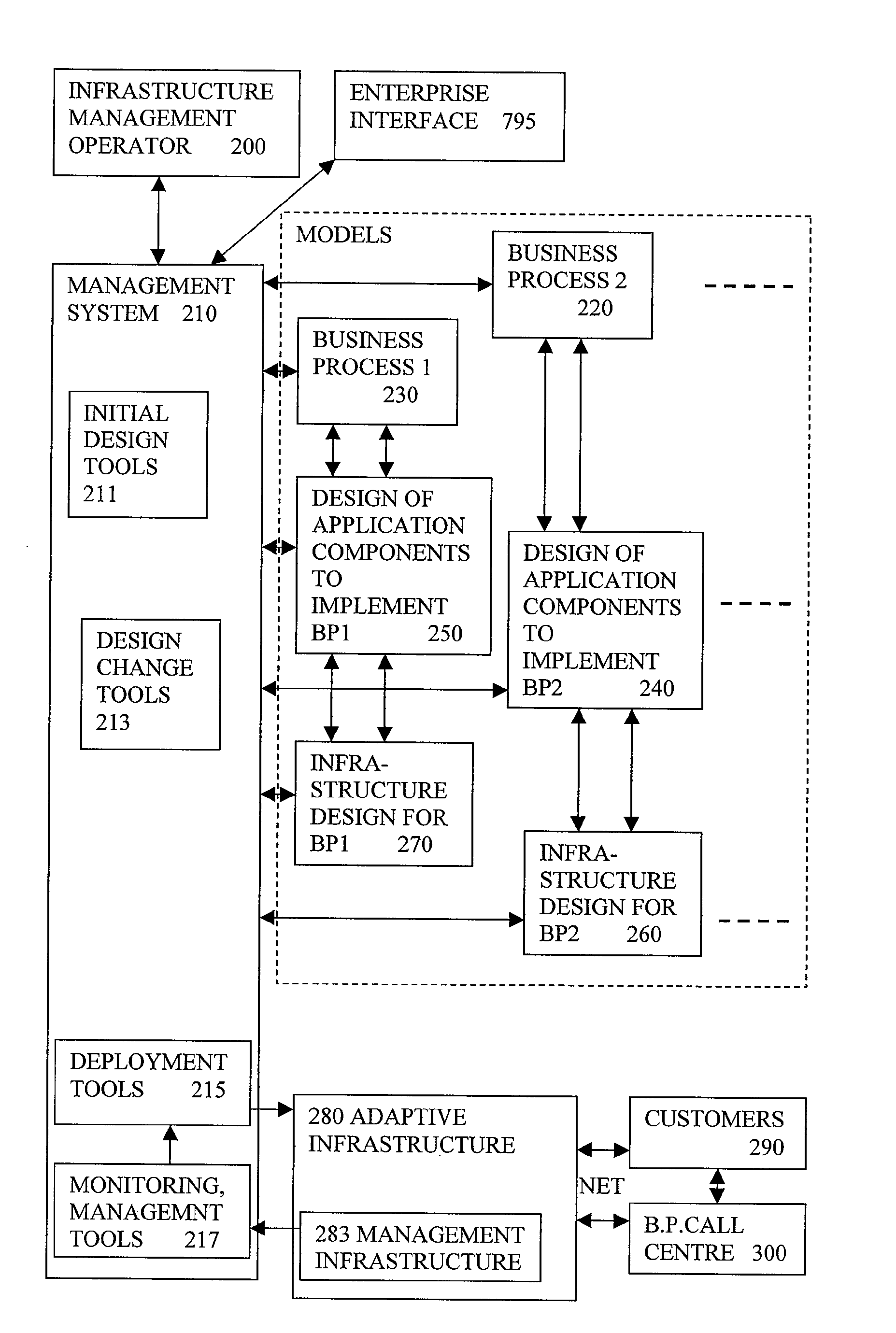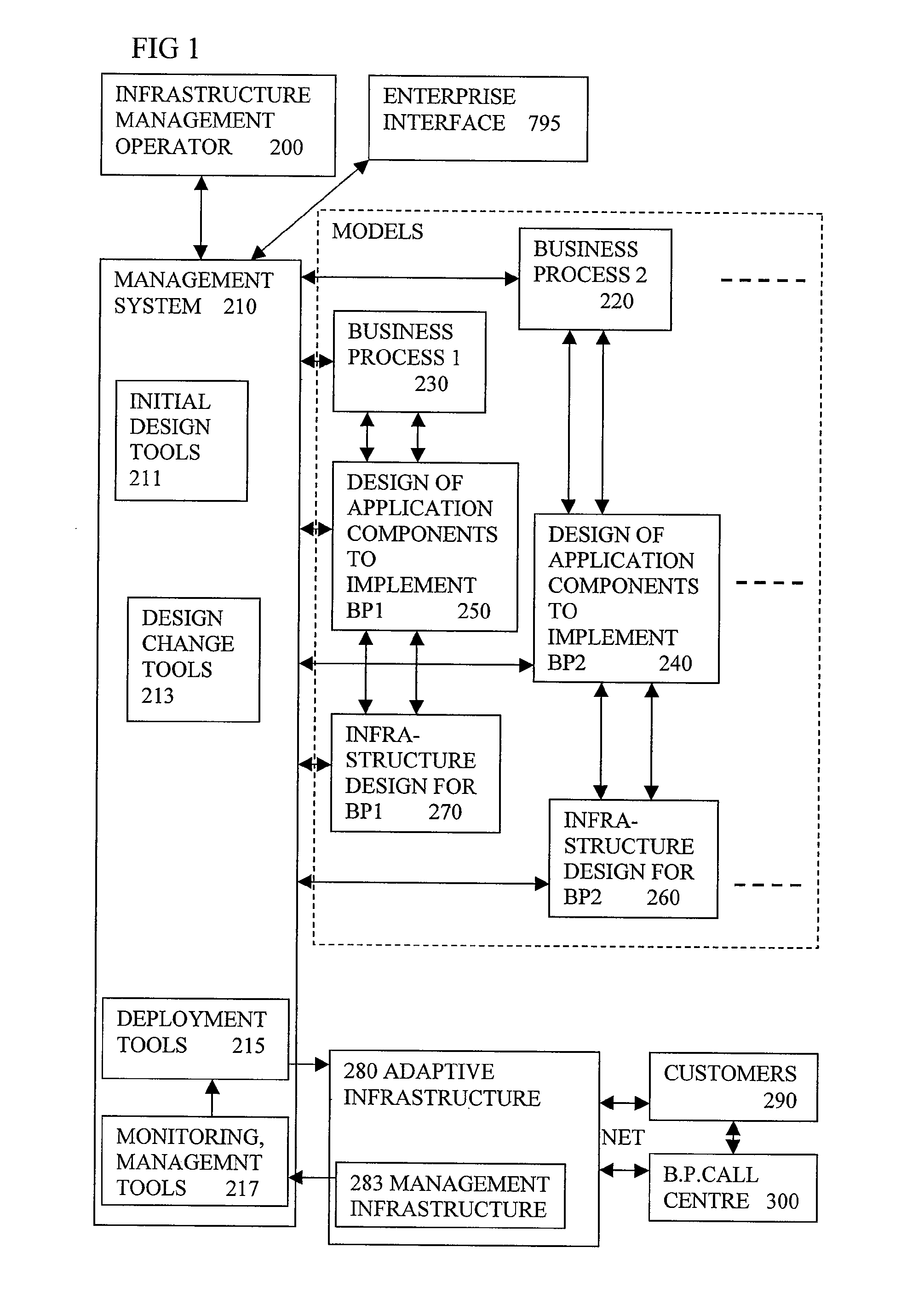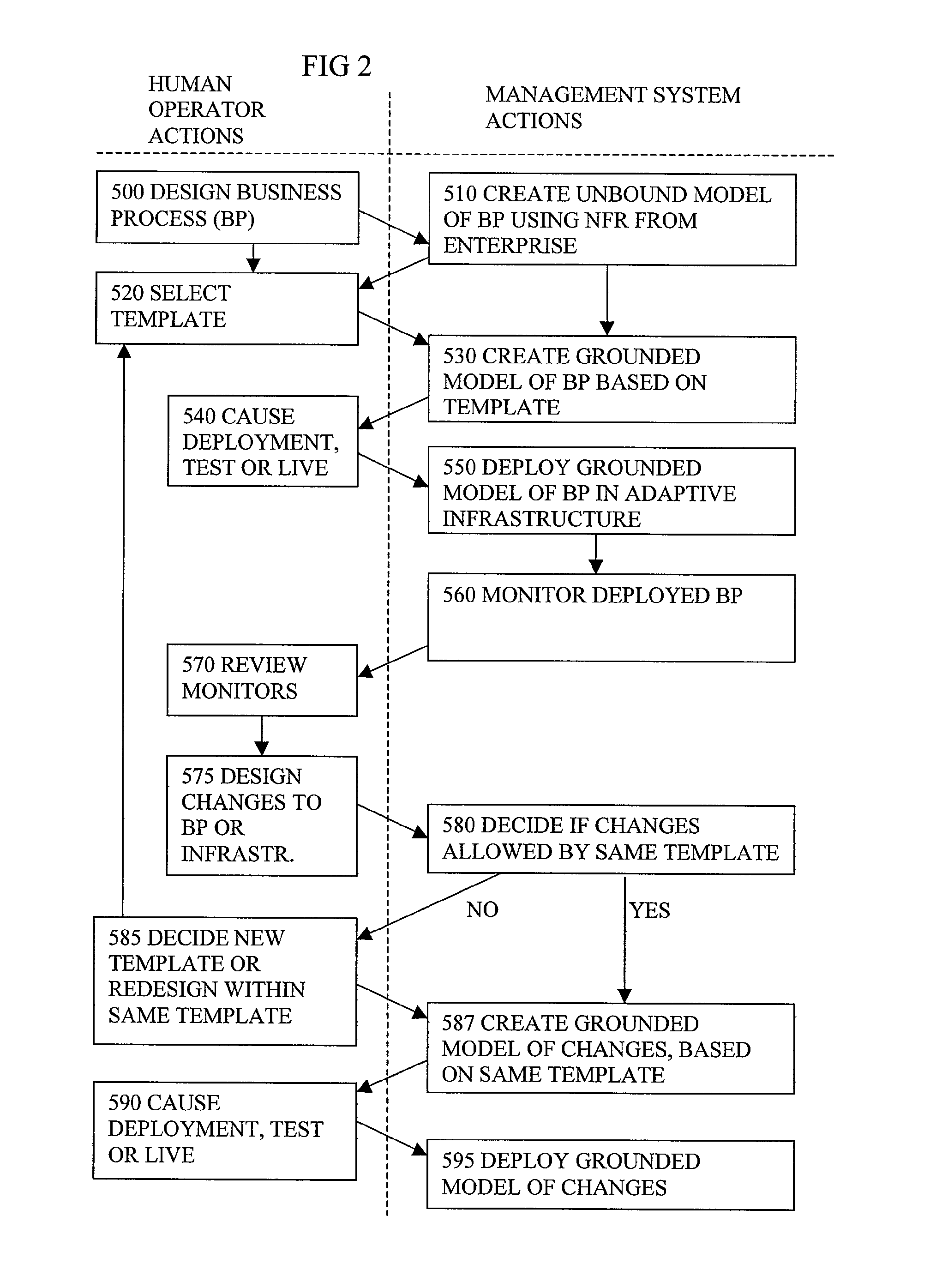Modelling Computer Based Business Process For Customisation And Delivery
a computer-based business process and customisation technology, applied in the field of model systems, can solve the problems of difficult management of physical it (information technology) infrastructures, difficult manual tasks, and difficulty in changing network configuration, and achieve the effects of increasing business, increasing predictability, and increasing certainty
- Summary
- Abstract
- Description
- Claims
- Application Information
AI Technical Summary
Benefits of technology
Problems solved by technology
Method used
Image
Examples
Embodiment Construction
Definitions
[0042]“non-functional requirements” can be regarded as how well the functional steps are achieved, in terms such as performance, security properties, cost, availability and others. It is explained in Wikipedia (http: / / en.wikipedia.org / wiki / Non-functional_requirements) for non-functional requirements as follows—“In systems engineering and requirements engineering, non-functional requirements are requirements which specify criteria that can be used to judge the operation of a system, rather than specific behaviors. This should be contrasted with functional requirements that specify specific behavior or functions. Typical non-functional requirements are reliability, scalability, and cost. Non-functional requirements are often called the ilities of a system. Other terms for non-functional requirements are “constraints”, “quality attributes” and “quality of service requirements”.”
[0043]Functional steps can encompass any type of function of the business process, for any purpose...
PUM
 Login to View More
Login to View More Abstract
Description
Claims
Application Information
 Login to View More
Login to View More - R&D
- Intellectual Property
- Life Sciences
- Materials
- Tech Scout
- Unparalleled Data Quality
- Higher Quality Content
- 60% Fewer Hallucinations
Browse by: Latest US Patents, China's latest patents, Technical Efficacy Thesaurus, Application Domain, Technology Topic, Popular Technical Reports.
© 2025 PatSnap. All rights reserved.Legal|Privacy policy|Modern Slavery Act Transparency Statement|Sitemap|About US| Contact US: help@patsnap.com



